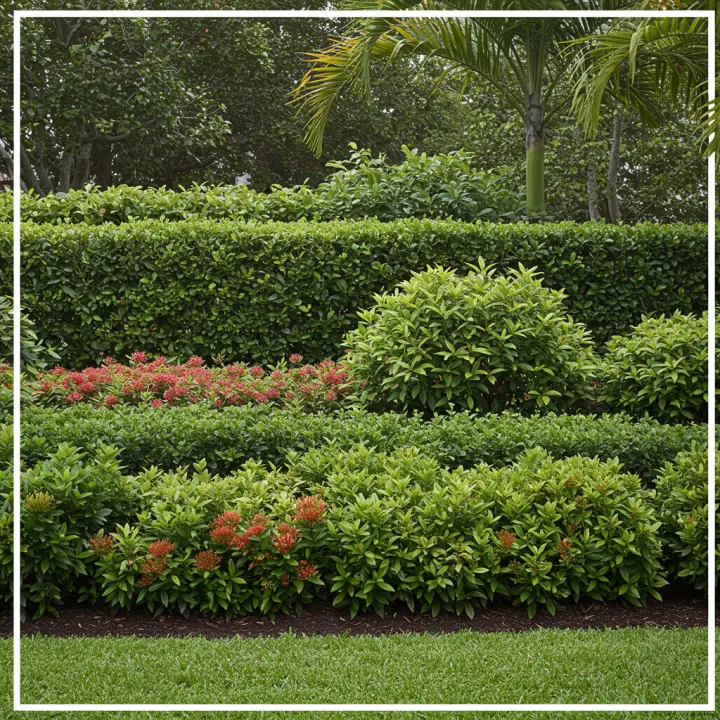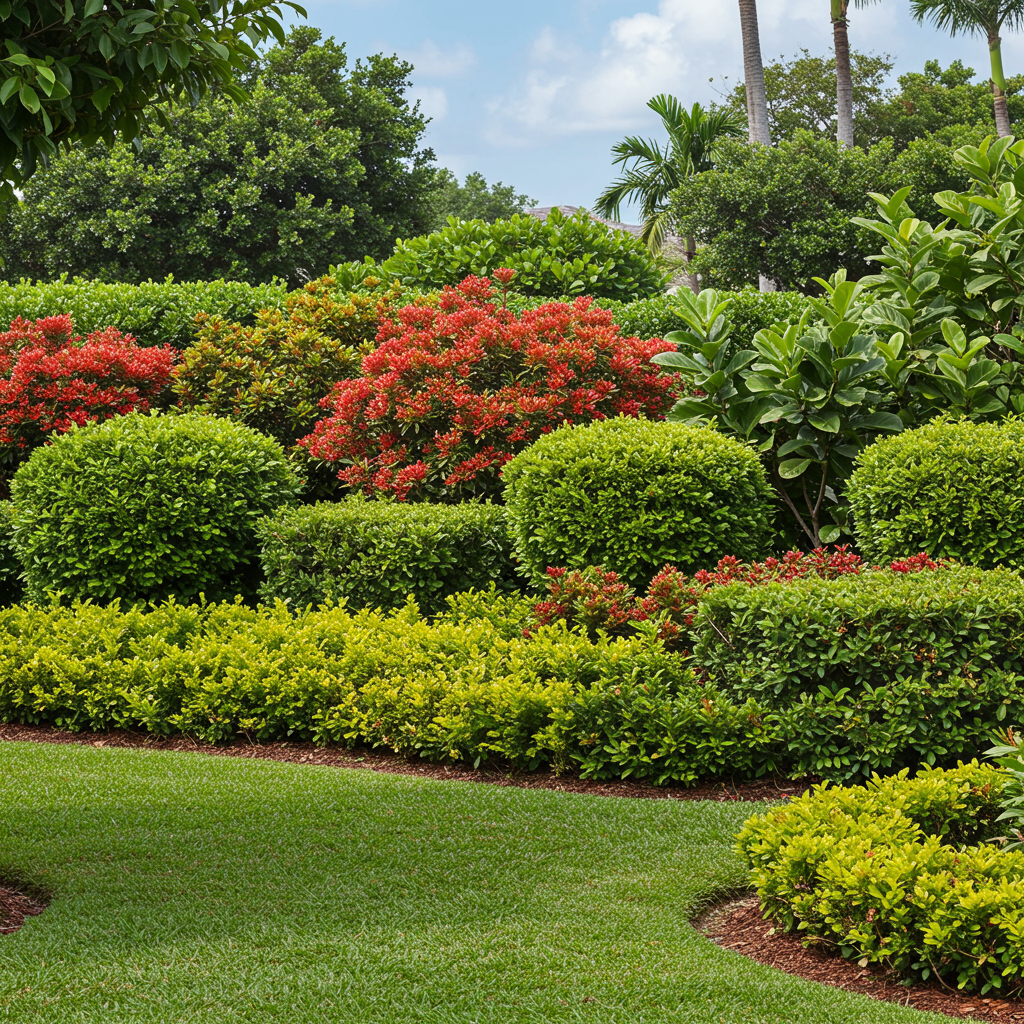Whether you’re looking to enhance your privacy, reduce noise, or simply add lush greenery to your property, choosing the right plants is crucial, especially in South Florida’s unique climate. This guide explores the best hedge plants in South Florida, offering top-tier selections that thrive in our tropical environment, from salt-tolerant options to fast-growing privacy screens, complete with essential planting and care advice.
—
Elevate Your Landscape: Discover the Best Hedge Plants in South Florida

South Florida’s vibrant ecosystem and unique climate present both opportunities and challenges for gardeners. High humidity, intense sun, occasional droughts, and even salt spray in coastal areas mean that not all plants are created equal. When it comes to creating a beautiful, functional hedge, selecting species that can truly thrive in these conditions is paramount.
A well-chosen hedge offers more than just aesthetic appeal; it provides privacy, acts as a wind or sound barrier, and can boost your home’s curb appeal. This guide will walk you through the top hedge plants perfectly suited for South Florida, helping you create a verdant boundary that flourishes year-round.
Why Hedges Matter in South Florida
Hedges play a pivotal role in South Florida landscapes, offering numerous benefits:
Privacy Screening: Ideal for creating natural barriers that shield your home from neighbors or busy streets.
Noise Reduction: A dense hedge can absorb sound, making your outdoor spaces more tranquil.
Windbreak: Protects more delicate plants and outdoor living areas from strong winds, especially during storm season.
Aesthetic Appeal: Adds structure, greenery, and often beautiful flowers or foliage to your garden.
Wildlife Habitat: Many hedge plants provide shelter and food for local birds and pollinators.
Key Considerations for Choosing Your South Florida Hedge
Before you dig, consider these factors to select the perfect hedge plants for your specific needs and environment:
Size and Growth Rate
Think about the mature height and width you desire. Do you need a fast-growing hedge for immediate privacy, or are you comfortable with a slower-growing option that requires less frequent trimming?
Light Requirements
Most South Florida hedges prefer full sun (6+ hours of direct sunlight daily), but some can tolerate partial shade. Assess your specific planting area.
Soil and Water Needs
While South Florida soil can vary, good drainage is key. Consider drought tolerance once established, especially if you prefer a low-maintenance landscape.
Salt Tolerance
If you live near the coast, salt spray can severely damage non-tolerant plants. Prioritize highly salt-tolerant varieties like Buttonwood or Clusia.
Maintenance Level
Some hedges require frequent pruning to maintain their shape, while others are more free-form. Factor in your willingness to prune and fertilize.
Desired Function
Is your main goal privacy, a decorative border, an accent, or attracting wildlife? This will influence your plant choice.
Our Top Picks for Best Hedge Plants in South Florida
Here are some of the most reliable and beautiful hedge plants that thrive in South Florida:
Sweet Viburnum (Viburnum odoratissimum)
One of the most popular and fast-growing hedges in Florida, Sweet Viburnum is beloved for its dense, glossy green foliage and rapid growth. It can quickly form a tall privacy screen, reaching heights of 10-15 feet or more if left untrimmed. It’s adaptable, tolerates various soil types, and requires moderate water once established.
Podocarpus (Podocarpus macrophyllus)
A classic choice for formal hedges in South Florida, Podocarpus is an evergreen with slender, dark green leaves that resemble pine needles. It’s highly versatile, taking well to shearing into precise shapes while also growing into a natural, dense screen. Podocarpus is relatively low-maintenance, hardy, and tolerates sun to partial shade.
Clusia (Clusia guttifera, Clusia rosea)
Often called the “Autograph Tree” due to its thick, leathery leaves that can be etched, Clusia is an incredibly tough and salt-tolerant plant ideal for coastal South Florida. It forms a dense, attractive hedge with large, paddle-like leaves. Drought-tolerant and requiring minimal care once established, Clusia is an excellent choice for a robust, low-maintenance screen.
Green Island Ficus (Ficus microcarpa ‘Green Island’)
While some ficus species have a bad reputation for aggressive roots, the ‘Green Island’ cultivar is a more manageable variety for hedging. It features attractive, rounded, dark green leaves and a naturally compact growth habit. It provides a dense privacy hedge and responds well to pruning. Caution: While ‘Green Island’ is less aggressive, ensure adequate space and monitor roots, especially near foundations or pipes, as with any Ficus.
Buttonwood (Conocarpus erectus)
A fantastic native South Florida hedge plant, Buttonwood is an excellent choice, especially for coastal properties due to its high salt tolerance. It has beautiful silvery-green or green foliage (depending on the cultivar) and is incredibly resilient to harsh conditions. Buttonwood can be maintained as a formal hedge or allowed to grow into a more natural, multi-stemmed screen, attracting local wildlife.
Ixora (Ixora coccinea)
For those seeking a more vibrant, flowering hedge in South Florida, Ixora delivers. Known for its continuous clusters of bright red, orange, pink, or yellow flowers, Ixora is perfect for lower hedges, borders, or adding a tropical pop of color. It prefers full sun and acidic soil to thrive and attract pollinators.
Firebush (Hamelia patens)
Another outstanding native South Florida plant, Firebush is a rapidly growing, deciduous (though often evergreen in South Florida’s warm winters) shrub that produces an abundance of tubular, red-orange flowers almost year-round. It’s a magnet for hummingbirds and butterflies and can form a dense, informal hedge up to 8-10 feet tall. It’s drought-tolerant and low-maintenance once established.
Oleander (Nerium oleander)
Oleander is a classic choice for hot, dry, and salt-tolerant hedges in South Florida. It boasts beautiful white, pink, yellow, or red flowers through much of the year and is remarkably drought-tolerant. It forms a dense screen quickly.
Important Safety Note: All parts of the Oleander plant are highly toxic if ingested by humans or pets. Plant with caution, especially if you have young children or animals.Optimizing Your South Florida Hedge: Planting & Care Tips
Even the best plants need proper care to thrive. Follow these tips for a healthy, beautiful hedge:
Site Preparation and Planting
Soil Amendment: Improve sandy South Florida soils by mixing in compost or organic matter to enhance water retention and nutrients.
Spacing: Follow spacing recommendations for specific plants (usually 2-4 feet apart) to ensure a dense, continuous hedge.
Planting Depth: Ensure your plants are set at the same depth they were in their nursery container.
Watering for Success
Initial Watering: Water deeply and frequently after planting to help roots establish, potentially daily for the first few weeks, then reducing frequency.
Ongoing Hydration: Once established, most South Florida hedges are moderately drought-tolerant but will benefit from deep watering during prolonged dry spells.
Fertilization Schedule
* Fertilize your hedges 2-3 times a year (spring

